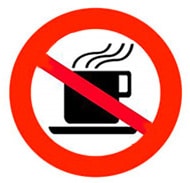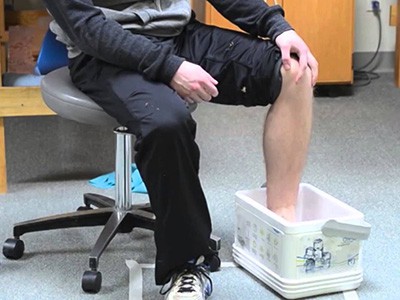While winter brings new opportunity for outdoor activities and creates the perfect backdrop for hunting, it also brings plummeting temperatures, icy wind chill, and the very real danger of frostbite and hypothermia.
While the best prevention is to avoid going outside altogether, when your lifestyle demands you to brave arctic temperatures and icy winds, there are some measures you can take to prevent frostbite. Plus, learn what to do in case of frostbite.
What Is Frostbite?
Frostbite occurs when temperatures outdoors are below freezing (32 degrees Fahrenheit, 0 degrees Celsius) or when the substantial wind chill is in effect causing otherwise endurable temperatures to become more dangerous. Prolonged exposure to the cold air causes of a layer of skin to freeze and die.
Frost Nip vs. Frostbite
The design of mittens allows your fingers to share warmth and will keep them considerably warmer. While not as serious, it can quickly turn to frostbite and necessitate medical attention.
Frost-nipped skin will appear red. Initially, the skin begins to tingle and then will begin to hurt.
Frostbitten skin, on the other hand, will be white or grayish yellow and look waxy. It may feel hard or firm and have no sensation. You may not be aware that anything is wrong simply because you can no longer feel the affected area and may mistake the lack of pain (as associated with frost-nipped skin) as a sign that nothing is wrong.
As frost nip turns to frostbite, the pain goes away because the skin is numb and is beginning to die.



How to Prevent Frost Nip and Frostbite
While these tips are specifically recommended when heading outside in cold temperatures, note that even just a few seconds of exposure when the wind chill plummets is enough to cause frostbite to exposed skin. If you have previously gotten frostbite, these tips should be followed when going out in the cold in general. Previously frostbitten skin will always be more susceptible to frostbite in the future, so be smart and take care to protect yourself even in the temperature hovers in the upper twenties.
Exposed skin is more susceptible so bundling up and covering as much surface as possible is the best prevention when you must head outdoors in cold weather. Ears should be covered entirely. However, a hat is always a better choice than relying just on a headband for more coverage. Ski masks especially are a great choice if you’ll be outside for prolonged periods as they afford the most coverage for your head, neck, and face.
When deciding between mittens and gloves, keep in mind that design of mittens allows your fingers to share warmth and will keep them considerably warmer. While that may limit your ability, consider how much less dexterous you’ll be should you lose a finger or two to frostbite.
Applying a heavy moisturizing salve such as bag balm, udder cream, or a homemade salve made with tallow or coconut oil to the more sensitive skin (in addition to covering with layers) can help to provide additional protection. Of course, this is not a surefire protectant against frostbite or even frost nip, but healthy skin is always more resistant to damage and, in the event of injury, healthy skin will heal faster.
Bundling up in warm clothes isn’t enough. Clothing should be layered yet loose. It’s not the clothing that keeps you warm so much as the air pockets among the layers which hold the heat. Inner layers of clothing should wick away sweat to help keep you dry, while outer layers should be wind and waterproof. This combination affords the most protection from frostbite and hypothermia.



Avoid caffeine, alcohol, and smoking as these all increase heat loss and make the body more susceptible to frostbite.
What to Do in Case Of Frostbite
While frost nip can be treated effectively at home using the guidelines described below, frostbite requires medical treatment. If there is any discoloring of the skin, blisters, or skin is numb seek immediate medical attention while employing the methods described below until you get there.





Never use direct heat to rewarm frostbitten skin. That means no heating pads, or holding frostbitten areas close to a heat source such as a heater or fire. Do not massage or rub at the frostbitten skin. Do not pop any blisters that form on the frostbitten skin.
IMPORTANT: If you can’t keep the area warm once you start to rewarm it then hold off on rewarming and just seek medical attention. Rewarming the area then re-exposing it to cold temperatures can cause further/worse damage.

Gently rewarm the frost nipped or bitten skin. Be sure to remove all wet clothing, as it can hide frostbitten areas and can lead to hypothermia. Use warm but not hot water until the skin is warm and red (this could take about 30 to 40 minutes.) It can be a warm (not hot) shower or warm (not hot) bath. You can also use wet heat such as from a warm wet washcloth or compress.
Another way to gently rewarm frostbitten areas until you can get medical attention is to cup your hands around the area and blow warm air onto the frostbitten skin (this may require another person, admittedly.) You can also hold frostbitten areas, such as fingertips and hands, close to your body to rewarm them gently while on your way to a medical personnel.
Once the area is rewarmed, gently wrap it in sterile bandages. Fingers and toes should be kept separated, cotton balls or sterile padding between them works well.
Drink warm fluids to help raise the body’s core temperature and prevent hypothermia. This will also gently warm frostbit areas from the inside out.
How to Prevent Frostbite & What to Do in Case Of
Frostbite is a serious medical concern that can result to permanently damaged skin and even lost fingers, toes, and earlobes. For this reason, it’s very important to safeguard yourself against frostbite and to take immediate measures to warm up when you first notice your skin becoming too cold (i.e., frost nip: skin is red and tingly or may even hurt.)
Always rewarm skin gently if you suspect frostbite as direct heat and warming the skin too fast can cause further damage. When outdoors in cold temperatures, it’s also helpful to have a buddy with you who can alert you to signs of frostbite on your face and ears, and vice versa. Following the guidelines and tips described above can help you to prevent frostbite and stay safe while enjoying the beautiful winter weather.